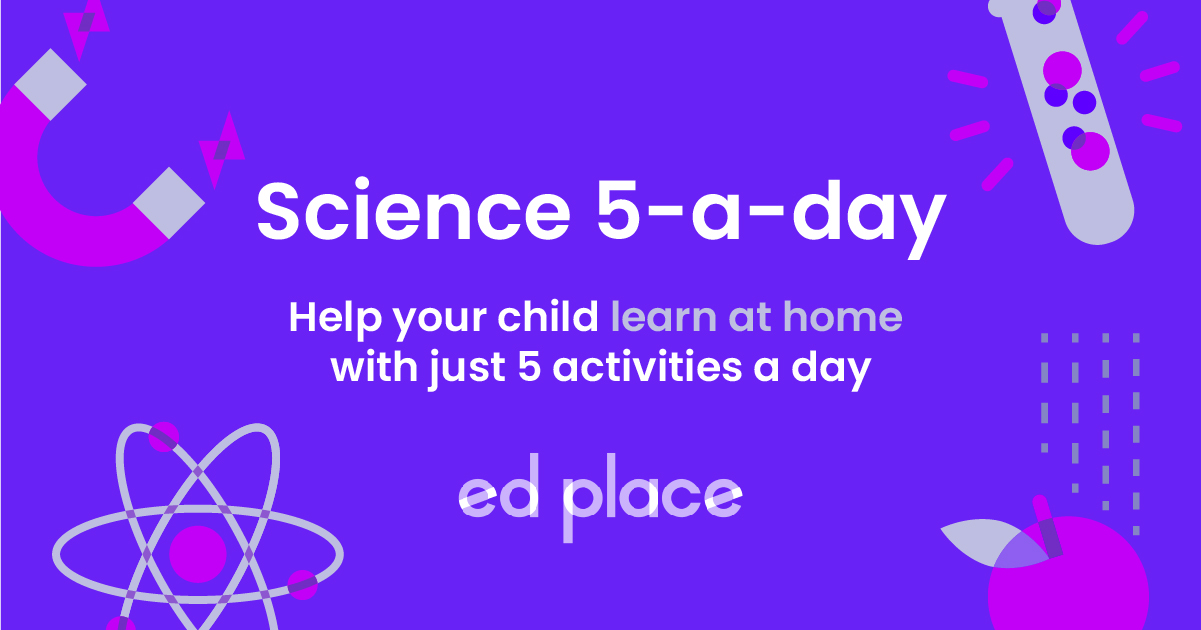
EdPlace's Key Stage 3 Home Learning Science Lesson: Grouping Living Things
Looking for short lessons to keep your child engaged and learning? Our experienced team of teachers have created English, maths and science lessons for the home, so your child can learn no matter where they are. And, as all activities are self-marked, you really can encourage your child to be an independent learner.
Get them started on the lesson below and then jump into our teacher-created activities to practice what they've learnt. We've recommended five to ensure they feel secure in their knowledge - 5-a-day helps keeps the learning loss at bay (or so we think!).
Are they keen to start practising straight away? Head to the bottom of the page to find the activities.
Now...onto the lesson!
Got the energy to identify are renewable or non-renewable energy resources?
“Turn off the kitchen lights, you’re wasting energy!” You may have said something similar to your child before and it was probably the last time you spoke about energy sources to your child. Renewable and non-renewable energy sources are not really an everyday casual conversation you have with an 11-year old!
We're confident that if you follow the step-by-step approach below your child will be able to:
1) Define the term energy source
2) Distinguish between renewable and non-renewable energy resources
3) Explain their understanding back to you. If they've really grasped it!
Step 1: Key Terminology
Before we get started, it’s important to check that your child understands what the key terminology means- what exactly is energy?
Energy can be defined as the ability to do work. It exists in many forms and can be changed from one form to another. For example, chemical energy in the food we eat is converted to heat (thermal) energy and kinetic (movement) energy by our bodies. It’s this energy that allows our bodies to carry out a number of jobs.
Step 2: Real Life Applications
Another example is when you kick a ball. The potential (stored) energy is converted to kinetic energy. It’s important to remember that energy is never lost; it can’t be created or destroyed, it’s always conserved.
There are many types of energy, some examples of their uses can be seen below:
Light - Light bulbs, torch
Sound – TV, musical instruments
Chemical – Food, batteries
Gravitational – Books on a shelf, a cup on the kitchen counter
Almost all energy originates from the sun. Plants use the suns energy to photosynthesise (to make sugar/glucose). Animals that eat plants will get a portion of that energy and will pass it on to animals that it gets eaten by. Energy is passed on.
Step 3: Spot the Difference
So what exactly is an energy source? An energy source is where energy originates from. Often this is the sun. From the suns energy, other resources were made, such as oil, coal and natural gas.
Energy resources can be divided into two main groups: renewable and non-renewable resources.
Non-renewable resources are ones that can’t be replaced (renewed) once they are all used up and will eventually run out if we use them faster than they can form.
Oil, coal and natural gas are examples of fossil fuels. They were formed from living organisms over the course of millions of years. Coal was formed from the remains of plants and trees whereas oil and gas were formed from the remains of sea creatures. These were buried over millions of years. We dig these up to use as fuels.
So now you know about non-renewable resources, what are renewable resources? Renewable resources won’t run out. They are easy to regenerate. Sometimes they are referred to as alternative energy resources. Some examples are solar energy, wind and tidal energy.
Step 4: Have a Go!
Why not apply your knowledge to the following questions?
Answer true or false to the following questions:
1. Plants use fossil fuels as their energy source
2. The sun is the original energy source
Decide if the following are renewable or non-renewable energy resources:
1. Wind power
2. Tidal power
3. Coal
4. Solar power
5. Give one difference between the energy resources, coal and wind.
6. What similarities are there between the energy resources, oil and gas?
Step 5 - Activity Time
Now, you’ve had some practice, why not assign your child the following five activities in this order.
All activities are created by teachers and automatically marked. Plus, with an EdPlace subscription, we can automatically progress your child at a level tailored to their needs. Sending you progress reports along the way so you can track and measure progress, together - brilliant!
Activity 4 - Understand Energy Efficiency
Activity 5 - Reducing Energy Waste
Answers
1. False
2. True
3. Renewable
4. Renewable
5. Non-renewable
6. Renewable
7. Coal is non-renewable/fossil fuel whereas wind is renewable/not a fossil fuel
8. Both oil and gas are made from marine animals/non-renewable/fossil fuels
Keep going! Looking for more activities, different subjects or year groups?
Click the button below to view the EdPlace English, maths, science and 11+ activity library








